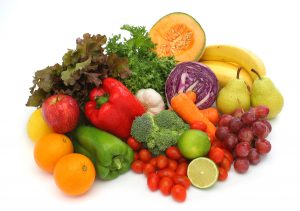Background
Diverticulosis results from pouches that form in the wall of the colon (or large intestine). Diverticulitis is an inflammation or infection of these pouches. Diverticular disease is more common among older adults than younger people (Tursi, 2007). Sixty-five percent of older adults will develop diverticulosis by age 85 (Kennedy-Malone et al. 2004). The exact cause of diverticulosis is not known, but it is speculated that a diet low in fiber and high in refined foods causes the stool bulk to decrease, leading to increased colon transit time. Retention of undigested foods and bacteria results in a hard mass that can disrupt blood flow and lead to infection. The earlier the diagnosis and treatment, the better the outcomes will be; however, if complications such as bleeding increases the risk of less- than- optimal outcomes.
Warning Signs
Risk factors for diverticulosis include obesity, chronic constipation, and straining, irregular and uncoordinated bowel contractions, and weakness of bowel muscle due to aging. Other risk factors are directly related to the suspected cause of the condition. These include older than 40 years old of age, low-fiber diet, and the number of diverticula in the colon (Thomas, 2011). Diverticulosis may result in pain in the left lower quadrant (LLQ), can get worse after eating, and may improve after a bowel movement. Warning signs of diverticulitis include fever, increased white blood cell count, bleeding that is not associated with pain, increased heart rate, nausea, and vomiting.
Diagnosis
Evaluation of the abdomen may reveal tenderness in the LLQ and there may be rebound tenderness with involuntary guarding and rigidity. Bowel sounds may be initially hypoactive and can be hyperactive if the obstruction has passed. Stool may be positive for blood. The initial evaluation is abdominal Xx-ray films, followed by a barium enema, though a CT scan with oral contrast is more accurate in diagnosing this condition (Thomas, 2011). A complete blood count may be done to assess for infection.
Treatments
Diverticulosis is managed with a high-fiber diet or daily fiber supplementation with psyllium. Diverticulitis is treated with antibiotics, but in acute illness the person may require hospitalization for IV hydration, analgesics, bowel rest, and possible NG tube placement. Morphine sulfate should be avoided because it increases the intraluminal pressures within the colon, causing the symptoms to get worse (Thomas, 2011). Patients should learn about a proper diet, avoidance of constipation and straining during bowel movements, and when to seek medical care. The diet should include fresh fruits, vegetables, whole grains, and increased fluid intake, unless contraindicated. In extreme cases, either where the person has complications that do not resolve with medical management or has many repeated episodes, a colon resection may be needed. Patients will need to work closely with their primary care provider to manage any ongoing problems.
Adapted from Mauk, K. L., Hanson, P., & Hain, D. (2014). Review of the management of common illnesses, diseases, or health conditions. In K. L. Mauk’s (Ed.) Gerontological Nursing: Competencies for Care. Burlington, MA: Jones and Bartlett Publishers. Used with permission.
digestive.niddk.nih.gov/ddiseases/pubs/diverticulosis/

